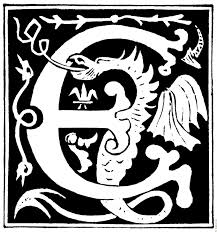Let me state from the outset of this post that I am a layperson when it comes to nutritional health research. However, that does not prevent me from accessing the vast amounts of information online and elsewhere (and taking a college class in nutrition here and there) in my quest for answers to my insatiable desire to learn more about health.
I recently watched Dr. Oz’s show and his interview with Dr. Martin Blaser regarding the deleterious effects of over-used antibiotics on human health and obesity.1 Not only is there a link between prescribed antibiotics and obesity in America, but antibiotics in our meats, dairy products and eggs seem to be a problem, as well. (I highly recommend that you watch Dr. Oz’s program to learn more. See link in references below.)
Why do antibiotics that make us fat? Sharon Begley references Dr. Martin Blaser in a 2013 Reader’s Digest article: “The rise of obesity around the world is coincident with widespread antibiotic use,” says Dr. Blaser. “Early exposure to antibiotics may prime children for obesity later in life.”
Antibiotics kill the bad bacteria that cause infection, so sometimes you need to take them. However, those same antibiotics kill a lot of the good bacteria in the gut, as well. Studies show that a deficit of healthy, probiotic flora in the intestinal tract causes or leads to weight gain.2
To make matters worse, some antibiotics (such as ciprofloxacin) can increase the prostaglandin ghrelin in the body as much as six times. Ghrelin increases hunger, which leads to overeating. Ghrelin also increases abdominal fat.3
Sharon Begley further explains the reason farmers add antibiotics to food: “The drugs alter the gut bacteria in cattle, pigs, and other animals, substituting bacteria that are better at extracting maximum calories from feed, which makes the animals plump up.”4 If antibiotics make humans fat, of course they make animals fat and when we consume animal products pumped full of antibiotics, they must be making us fat. I should have made the connection before.
This means that our intestinal flora could control whether or not we gain or lose weight. Research shows that thin people have a greater number of bacteroidetes (good bacteria or probiotics) in their intestinal tract than overweight people.
So, my question is: How do we increase the bacteroidetes in our guts?
Ray Sahelian, MD wrote on April 6, 2014 that ingesting the probiotics like acidophilus could replace the harmful bacteria in the gut.5
Another way to increase bacteroidetes in your intestinal tract is to consume raw, whole, unpasteurized, grass-fed, antibiotic-free cow’s or goat’s milk. These types of milk contain the probiotics acidophilus and lactobacillus, as well as the enzymes necessary for digesting proteins in the milk.6 As some of you know, I have been on a mission to locate raw goat or cow milk, because I am allergic to dairy products. I wanted to find out if I would have the same allergies to unpasteurized milks. I have recently had the joy of purchasing a share of a cow and am reaping the benefits of freely consuming delicious, whole, raw dairy products without a single allergic side effects! (And for those of you wondering, it is an A1/A2 Jersey cow.)
To further increase bacteroidetes in your intestinal tract you can consume more prebiotics, a type of dietary fiber that feed the good bacteria in your gut. According to microbiologist Andrew Gewirtz of George State University, bacteroidetes increase in the presence of fructans. Fructans (short for Fructo-oligosaccharides or FOS) are the compounds found in asparagus, artichokes, garlic, and onions.7 FOS or Fructans are also found in high amounts in Jerusalem artichoke, blue agave, chickory, bananas, barley, wheat, jicama, and leeks. Interestingly, FOS has been used as a sweetener in Japan for years.8 This may possibly be yet another key to the mystery of trim, healthy cultures.
I, like so many thousands of other people in America, have been consuming lean chicken breasts and egg whites in order to lose weight and inches of fat, not realizing until Dr. Oz’s interview with Dr. Blaser that the antibiotics in the meat could be inhibiting my efforts. Since that show, I have begun making the switch to organic proteins. Of all diets this is probably one of the healthiest and easiest, so I might as well experiment on myself. (By the way, organic means antibiotic-free when it comes to meat, dairy and eggs.) After nearly two weeks I am still not completely antibiotic-free, because I don’t want to waste the foods I have already purchased. As soon as we finish up the antibiotic-infused foods in our house I’ll really get down to testing this antibiotic-free diet.
I’ll keep you posted on my progress and if any others of you are trying the “antibiotic-free diet” or have been on it for some time already, I’d love to hear from you. I have a lot of questions: Is it working for you? Have you lost weight? Have you been able to keep it off? Have you lost fat? Have you lost inches? Have you gained muscle mass? Are you healthier? Is your immune system stronger?
Thanks for reading!
1. http://www.doctoroz.com/episode/fat-drug-how-antibiotics-make-you-gain-weight
2. http://www.medicalnewstoday.com/articles/265434.php)
3. http://www.sciencedaily.com/releases/2009/05/090520055519.htm
4. Begley, Sharon. “When Germs are the Good Guys.” Reader’s Digest. October 2013: p. 112.
5. http://www.raysahelian.com/bacteroidetes.html
6. http://www.robinsonfarm.org/FactsRawMilk.html
7. Begley, Sharon. “When Germs are the Good Guys.” Reader’s Digest. October 2013: p. 111

